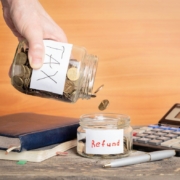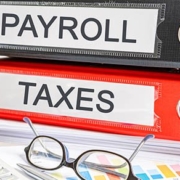Sold or Thinking of Selling Your Home? Here’s What You Need to Know
- Learn more about the home sale exclusion.
- Find out if the 2 out of 5 Rule applies to you.
- How will business use of the home affect your exclusion?
- Learn how to figure the gain or loss from a sale.
- Find out how previous use as a rental affects your exclusion.
- Learn more about Form 1099-S IRS matching.
- Find out which records you will need to figure gain or loss.
In spite of (or in some cases, because of) the COVID-19 pandemic, and with near-record-low home mortgage interest rates, the housing market is booming. September 2020 existing home sales were up 9.4% from August 2020. They were up 20.9% from 2019, according to the National Association of Realtors. If you are thinking of selling your home, this is a great time. However, there are many tax-related issues you should consider.
To help you prepare for reporting the sale you may have already made or make you aware of what issues you may face if you are in the “thinking about” stage, Fiducial will cover the tax basics and some special situations related to home sales and the home-sale gain exclusion.
Home Sale Exclusion
For decades, Congress has encouraged home ownership, including by providing a tax break for taxpayers selling their homes. Under the current version of the tax code, you are allowed an exclusion of up to $250,000 ($500,000 for married couples) of gain from the sale of your primary residence if you owned and lived in it for at least 2 of the 5 years previous to the sale. To note, you also cannot have previously taken a home-sale exclusion within the 2 years immediately preceding the sale.
There is no limit on the number of times you can use the exclusion so long as you meet these time requirements. However, extenuating circumstances can reduce the amount of the exclusion. Also, the home-sale gain exclusion only applies to selling your main home, not to a second home or a rental property.

The 2 out of 5 Rule for selling your home
As noted above, you must have used and owned the home for 2 out of the 5 years immediately preceding the sale. The years don’t have to be consecutive or the closest to the sale date. Vacations, short absences, and short rental periods do not reduce the use period. Want to qualify for the $500,000 exclusion? If married, you and your spouse must have used the home for 2 of the 5 years prior to sale. However, only one of you needs to meet the ownership requirement. When only one spouse in a married couple qualifies, the maximum exclusion is limited to $250,000 instead of $500,000.
If you acquired the home as part of a tax-deferred exchange (sometimes referred to as a 1031 exchange), you must have owned the home for a minimum of 5 years before the home-gain exclusion can apply. It must be said that this is a rare situation.
If you don’t meet the ownership and use requirements, there are some situations in which a prorated exclusion amount may be possible. For example, if you must sell your house due to extenuating circumstances such as a job-related move, a health crisis or other unforeseen events, you may receive a prorated exclusion amount. Another rule extends the 5-year period to account for the deployment of military members and certain other government employees. Call Fiducial if you have not met the 2 out of 5 rule. We can tell you if you qualify for a reduced exclusion when selling your home.
Business use of the home
If you used your home for business and claimed a tax deduction—for instance, for a home office, storing inventory in the home or using it as a day care center—that deduction probably included an amount to account for the home’s depreciation. In that case, up to the extent of the gain, the claimed depreciation cannot be excluded.
Figuring gain or loss from a sale
The first step is to determine how much the home cost, combining the purchase price and the cost of improvements. From this total cost, subtract any claimed casualty loss deductions and any depreciation taken on the home. The result is your tax basis. Next, subtract the sale expenses and this tax basis from the sale price. The result is your net gain or loss on the sale of the home.
If the result is negative, the sale is a loss. You may not claim losses on personal-use property such as homes for tax purposes. If the result is a gain, however, subtract any home-gain exclusion (discussed above) up to the extent of the gain. This is your taxable gain, which is, unfortunately, subject to income tax. Have you owned the home for at least a year and a day? Then the gain will be a long-term capital gain. As such, it will be taxed at the special capital-gains rate. This gain ranges from zero for low-income taxpayers to 20% for high-income taxpayers.
The gain may also be subject to the 3.8% net investment income surtax. This depends on the amount of all of your income. This tax was added as part of the Affordable Care Act. The tax computation can be rather complicated, so please call Fiducial for assistance.
Another issue that can affect your home’s tax basis (discussed above) applies if you purchased your home before May 7, 1997 after selling another home. Prior to that date, instead of a home-gain exclusion, you could defer any gain from a sale to the replacement home. Although this is now rare, if it matches your situation, the deferred gain would reduce your current home’s tax basis and add to any gain for the current sale.
Prior use as a rental
If you previously used your home as a rental property, the law includes a provision that prevents you from excluding any gain attributable to the home’s appreciation while it was a rental. The law’s effective date was the beginning of 2009, which means that you only need to account for rental appreciation starting in that year. Lawmakers passed this law to prevent landlords moving into their rentals for 2 years so that they could exclude the gains from those properties. Prior to the law change, some landlords had done this repeatedly.
Form 1099-S
Usually, the settlement agent—typically an escrow or title company—prepares IRS Form 1099-S, Proceeds from Real Estate Transactions. This form reports the home seller’s name, tax ID number, proceeds of the sale, date of the sale, etc. It is provided to both the IRS and the seller. Note that this form only includes information from the sale. It doesn’t provide any basis information to the IRS.
Sometimes, sellers think that if the home sale gain exclusion eliminates all of their gain from the sale of their home, they don’t need to report the transaction on their tax return. Unfortunately, this thinking could lead to correspondence (i.e., a bill for tax due) from the IRS as it attempts to match the sales price shown on the 1099-S to the seller’s tax return. To avoid this interaction with the IRS, you should report the home’s sale on your income tax return for the year of the sale. In doing so, you will be including your basis and exclusion information for the IRS.
Records
Assets worth hundreds of thousands of dollars, including your home, need your attention, particularly regarding records. When figuring your gain or loss, you will need a few records. At a minimum, you will need the escrow statement from the purchase, a list of improvements (not maintenance work) with receipts, and the final escrow (settlement) statement from the sale. If you encounter any of the issues discussed in this article, you may need additional documentation.
A few other rare home-sale rules still exist. As you can see, home-sale computations and tax reporting can be very complicated. Call Fiducial at 1-866-FIDUCIAL or make an appointment at one of our office locations to discuss your situation.
Ready to book an appointment now? Click here. Know someone who might need our services? We love referrals!
For more small business COVID-19 resources, visit Fiducial’s Coronavirus Update Center to find information on SBA loans, tax updates, the Paycheck Protection Program, paid sick and family leave, and more.









